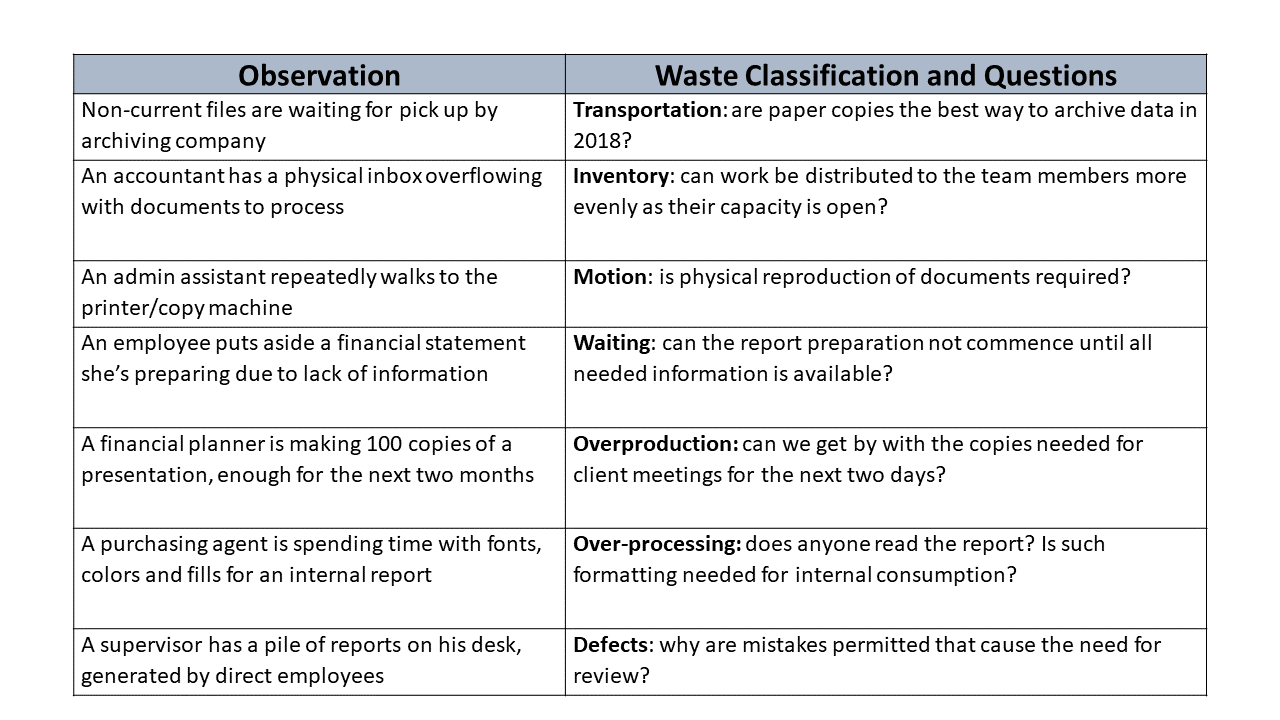
Previously, we wrote about the different types of waste in business processes; basically, anything that is not defined as value-added in the view of the customer. To be value-added, an activity must be done correctly the first time, it must transform the product or service in some way towards its end use, and the customer would willingly pay for it. There are various approaches to documenting these business processes in order to identify the sources of waste, and hence, the opportunities for process improvement. Some of these tools include a flow chart, a swim lane diagram, and a value-stream map, depending on the complexity of the process, the mix and volume of the work product, and other factors.
One of the simplest, and perhaps most overlooked techniques to identify waste is with your eyes. Lean Manufacturing has the concept of the “Gemba Walk”. According to Wikipedia,
Genba (現場, also Romanized as Gemba) is a Japanese term meaning "the actual place". Japanese detectives call the crime scene genba, and Japanese TV reporters may refer to themselves as reporting from genba. In business, genba refers to the place where value is created; in manufacturing the genba is the factory floor.
So, in a Gemba Walk in a factory, you go to the production floor, and try to identify what doesn’t look right. It’s very helpful to include team members who are not familiar with the production processes, to get fresh thinking on the scene. Here’s what you may see, and what questions it might provoke:

Figure 1 – Results of a Gemba Walk in a Factory
Now, let’s see how a Gemba Walk might look in a typical office environment:

Figure 2 – Results of a Gemba Walk in an Office
The questions are merely to encourage discussion, there may be valid reasons for any of these observations, and the process may already be optimum for the current conditions and requirements. But what if it’s not? Having done the Gemba Walk and having questions remain about the necessity for doing things as observed, you’ll have a list of candidates for process improvement changes or projects. And at that point, it may be time to break out the process mapping tools mentioned at the start of this article.
A Gemba Walk ought to be a regular occurrence in your workplace. Why not bring in a fresh set of eyes for your next one? A consultant from The Operations Group, LLC would make a good tour guide at your company, leading your team members on a Waste-hunting expedition.
